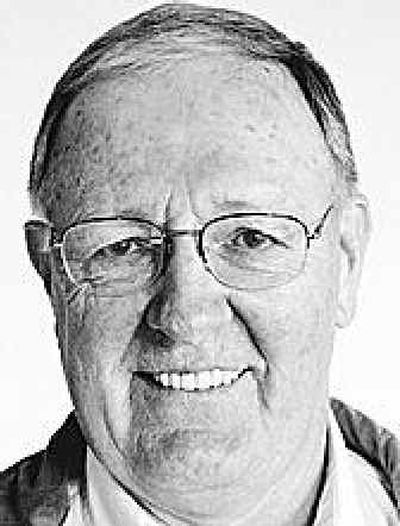Hospice volunteering teaches you about life, death

“Pete” was 92, a retired logger who was born in Kootenai County and had worked here most of his life. He suffered from congestive heart failure and his physician predicted he might die within six months. Thus, he was eligible for hospice services.
But other than that, he was just fine – intelligent, alert and ambulatory.
Pete lived with his daughter and son-in-law in the hills outside Rathdrum. They both worked during the day and, since Pete had surrendered his driver’s license because of his heart problems, he was marooned in their home in those hills at least 40 hours a week.
During my training as a hospice volunteer five years ago, I got the impression that my principal duty would be to relieve caregivers so they could go shopping, get their hair done, or just get away briefly from the 24-hour-a-day responsibility of caring for a dying relative or friend.
I also envisioned that the clients I’d be visiting would be bedridden, hooked to feeding tubes, barely able to communicate.
Since then, I’ve had a couple of patients like that, but most were like Pete.
My weekly visits with him were a joy. We took long rides by places he’d felled trees 70 years ago then skidded them out of the woods behind draft horses.
We visited his bank, the library. We shared a barber, bought each other lunch, just bummed around for four or five hours.
Pete taught me a lot – about how it was to live here nearly a century ago, about working in the woods back then and, most important of all, how to ease out of this world with grace.
When Pete died, I didn’t cry. I’d learned he was ready.
The Terri Schiavo case raised many people’s consciousness about issues related to dying, including hospice. That’s an international movement dedicated to providing physical, emotional and spiritual care to those who have life-limiting illnesses and to their families.
We don’t have a Hospice House in North Idaho like the one in Florida where Mrs. Schiavo spent her last years, but we do have a very active hospice organization that provides care to patients and their families in their own homes, in nursing homes and assisted-living facilities. It covers Kootenai, Benewah and Shoshone counties.
Financed in part by insurance, Medicare and Medicaid funds, Hospice of North Idaho also receives support from the community. Each year 20 volunteers sponsor a benefit wine tasting, another 90 volunteers operate Hospice thrift shops in Coeur d’Alene and Post Falls, and five other volunteers help in the organization’s Government Way office.
A local hospice team comprises the patient’s primary physician, a medical director, registered nurses, certified nurses aides, medical social workers, grief counselors, chaplains, a dietitian, occupational, physical and speech and respiratory therapists, and often a care-giving volunteer.
Owing to a number of factors, including our growing and aging population, the patient census for the Hospice of North Idaho has increased from 59 in 2003 to 110 today. Staff growth has kept up – barely – but in one critical area, there’s a need for more help.
There are only 20 to 25 active care-giving volunteers, including six men. They range in age from the 30s to the 80s. Not all are retired; a few, like real estate professionals, fit their hospice activities into their work weeks.
Many dying people have few visitors besides their hospice team members. Old clients often have outlived their peers; others are relatively new to our area. And, sad to say, sometimes friends avoid those in their last months, unwilling to face a dying person.
Volunteers help fulfill unmet needs.
In addition to providing respite to caregivers, we offer companionship to the dying. Some play cards with clients, others read to them. And sometimes, the patients just want to gab or reminisce with us.
To help alleviate the care-giving volunteer shortage, Hospice of North Idaho is offering a training program this month.
The curriculum, which will last about 24 hours, includes communications; social issues related to death and dying; understanding grief; volunteer roles, responsibilities and boundaries; spiritual and legal aspects; medical management; and the history and philosophy of hospice.
If you sign up you won’t earn any money, but there are all kinds of other payoffs: monthly luncheons with like-minded people; periodic in-service educational opportunities; a yearly banquet, plus some intangibles.
I know I’ve become at least a tad more empathetic, have learned how to be comfortable when visiting sick people; have gained a greater appreciation for life and – from Pete and many others like him – learned to face my own mortality.